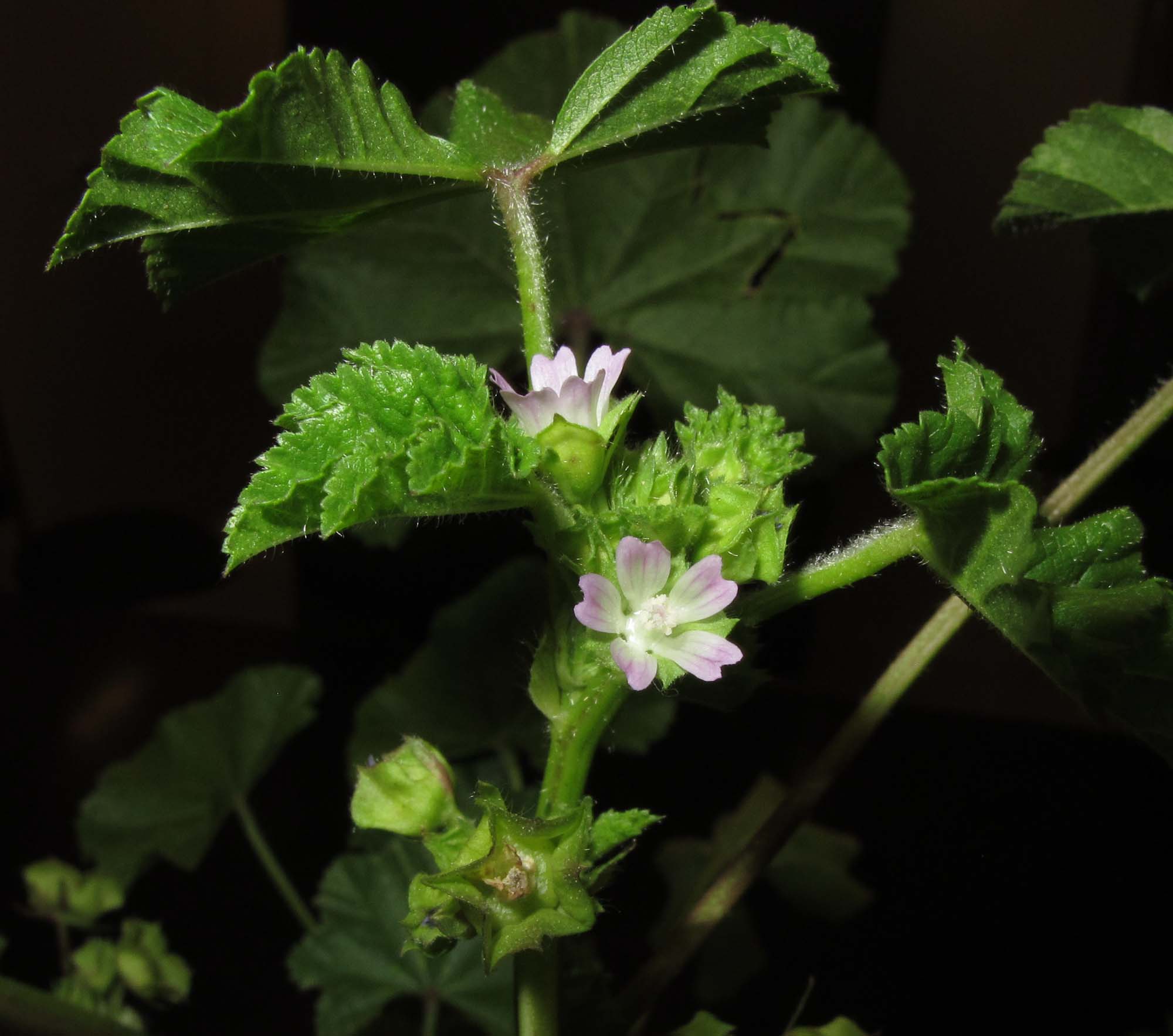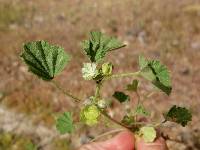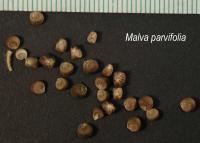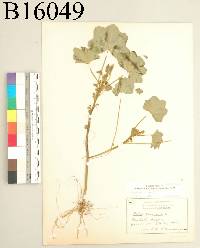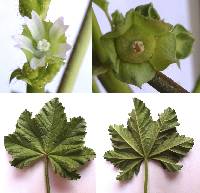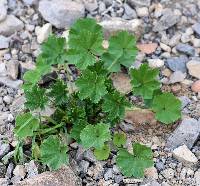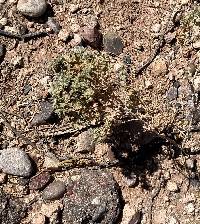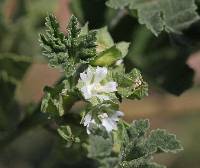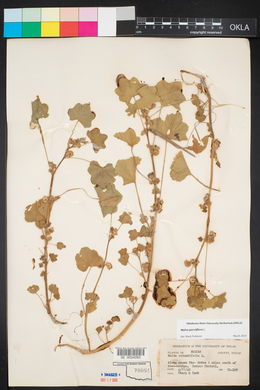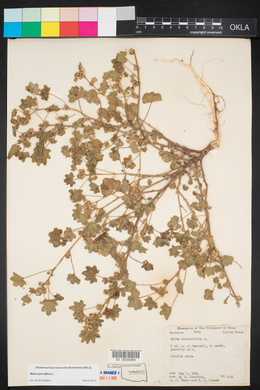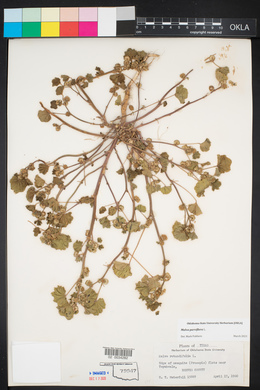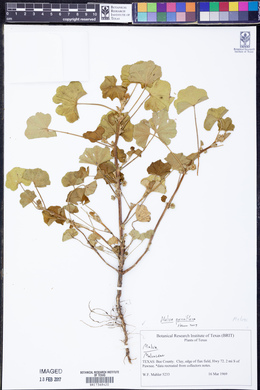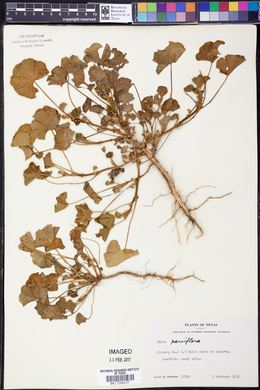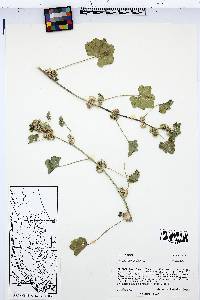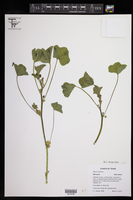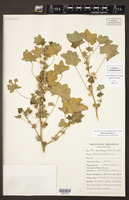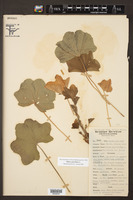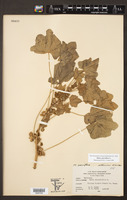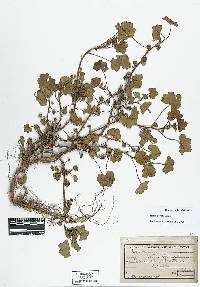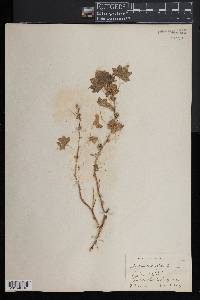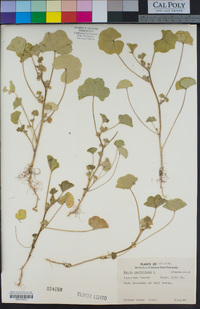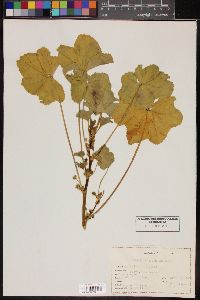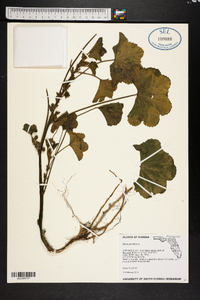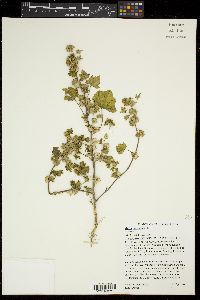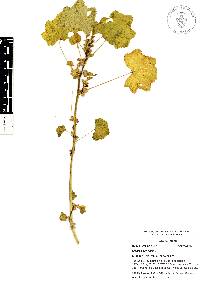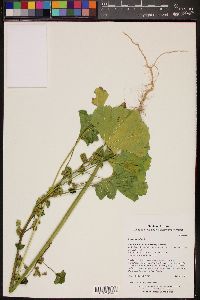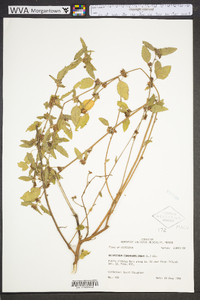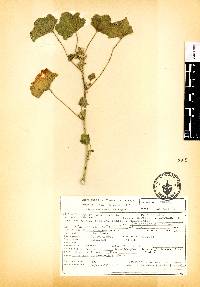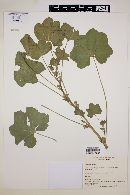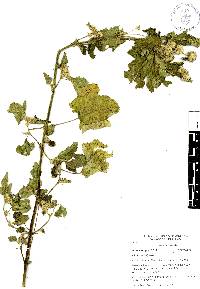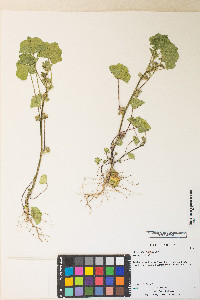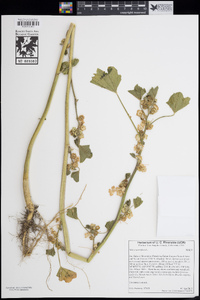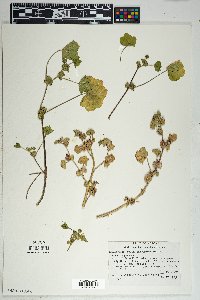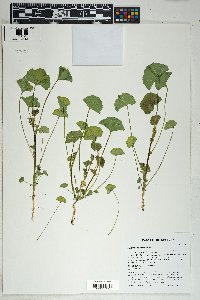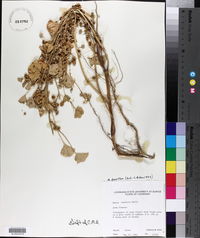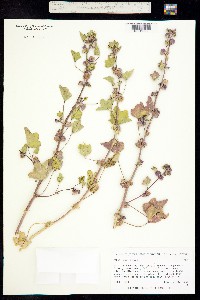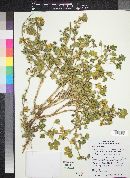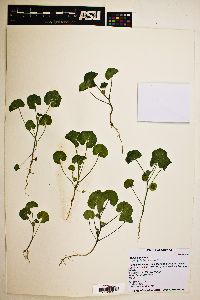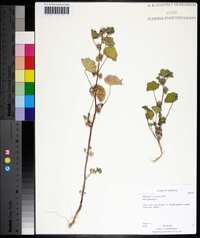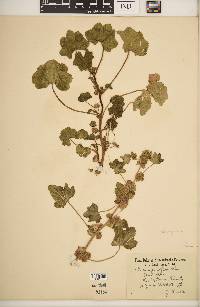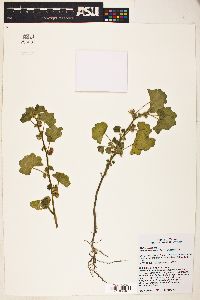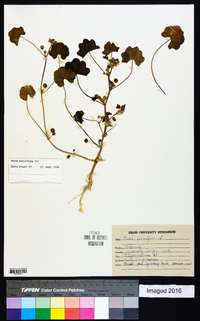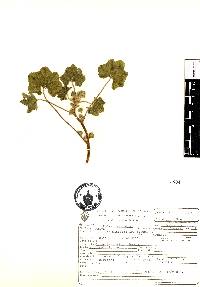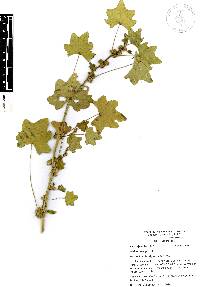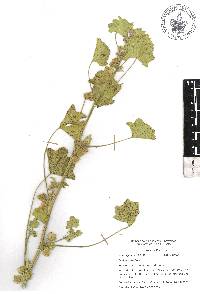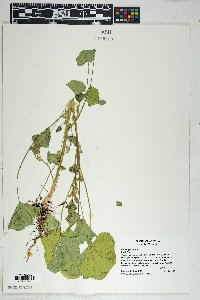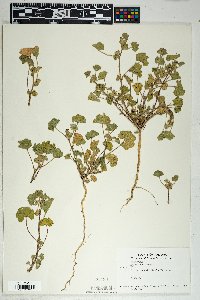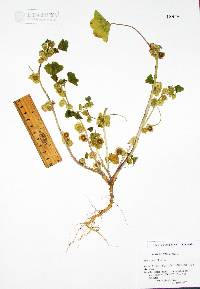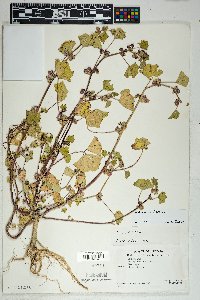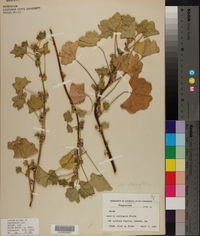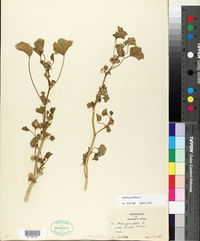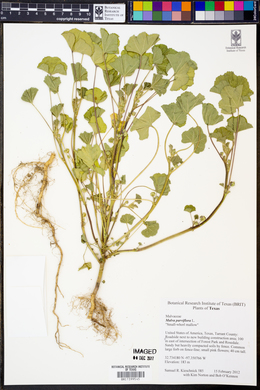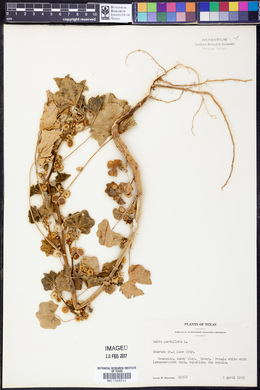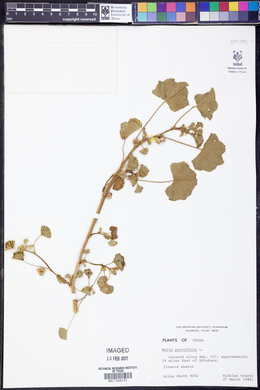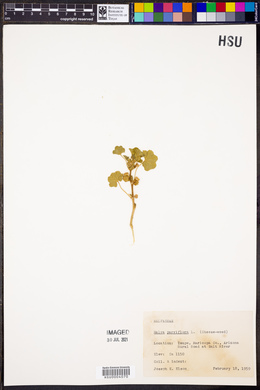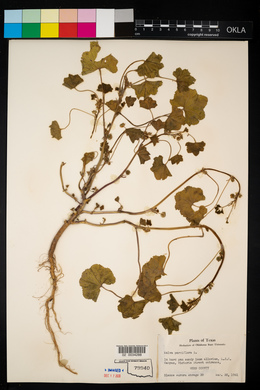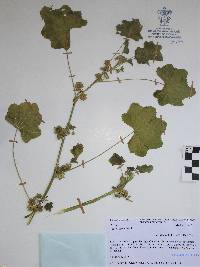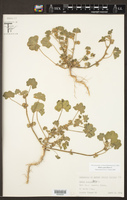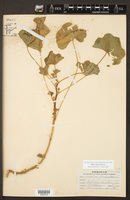
|
|
|
|
Family: Malvaceae
cheeseweed mallow, more...Small-Whorl Mallow, little mallow, cheeseweed (es: malva, quesito, malva de castilla, tash ma:hag)
[Malva parviflora var. cristata Boiss.] |
Plant: annual herb; trailing or ascending, slightly pubescent to glabrate Leaves: orbicular or reniform, 2-7 cm long, crenate, undulate, or 5-7-lobed Flowers: 1-4 in the leaf axils, short-pedicellate; calyx 3-4 mm long, accrescent to 7-8 mm in fruit; petals lavender or white, 4-5 mm long Fruit: nearly glabrous; mericarps ca. 10, rugose or wrinkled dorsally and winged at the angle between the dorsal and lateral walls Misc: Roadsides and fields, disturbed ground, and urban habitats; 300-2100 m (1000-7000 ft); flowers through most of the year REFERENCES: Fryxell, Paul A. 1994. Malvaceae. J. Ariz. - Nev. Acad. Sci. Volume 27(2), 222-236. Annual or biennial herb 20 - 80 cm tall Stem: erect with ascending branches from near base, hairless or sparsely hairy. Leaves: alternate, long-stalked, toothed, hairless to sparsely hairy, rounded to heart-shaped, but with five to seven, very shallow, wide, bluntly triangular lobes. Flowers: many, in clusters of two to four in upper leaf axils, short-stalked, pale whitish to lilac-blue, about 1 cm diameter, radially symmetric, with five somewhat spreading petals, and sepals immediately subtended by three, linear to narrowly lance-shaped bractlets. Sepals: five, but fused for up to half their length, then separating into five rounded-triangular lobes, often with some short hairs along the edges (but more rough-hairy in fruit). The calyx as a whole is rarely longer than the petals, but it greatly enlarges after flowering to mostly enclose the fruit. Petals: five, pale lilac-blue, hairless, 0.4 - 0.5 cm long (about same length as sepals), heart-shaped with narrowed base and wider outer edge with center indentation. Stamens: numerous, but filaments fused into an elongate tube with the anthers protruding near the top. Pistil: enclosed by the stamen tube, with at least ten superior carpels (ovule-bearing structures), ten or more slender styles coming up through center of stamen tube, and ending with exserted, slender stigmas facing inward. Fruit: a ring of ten or more, one-seeded, fairly hard, dark, often hairless, wrinkled-veiny, pitted, about 1 - 2 mm tall, beakless, winged (on edges), wedge-like segments (mericarps) mostly enclosed by the persistent and enlarged sepals atop short (under 1 cm) stalks. The mericarps typically separate from each other for dispersal, but do not open to release the seed (indehiscent). Similar species: Malva parviflora is most similar to M. rotundifolia, but in that species the mericarps are not winged, its flower and fruit stalks are longer (at least 1 cm), and it tends to be a more low spreading plant. Also very similar is M. neglecta, but its flowers and fruit have much longer stalks, the mericarps are not wrinkled or pitted but are densely covered with short soft hairs, and the petals are obviously longer than the sepals. Flowering: May to October Habitat and ecology: Native to the Mediterranean region, widespread as a weed in North America, but only reported once from the Chicago Region in a railroad yard. Occurence in the Chicago region: non-native Etymology: Malva means Mallow. Parviflora means small flowers. Author: The Field Museum Wiggins 1964, Kearney and Peebles 1969 Duration: Perennial Nativity: Non-Native Lifeform: Forb/Herb General: Introduced annual trailing or ascending herb, slightly pubescent to glabrate. Leaves: Orbicular or reniform, 2-7 cm long, crenate, undulate, or 5-7 lobed. Flowers: 1-4 in leaf axils, short-pedicellate, calyx 3-4 mm long, accrescent to 7-8 mm in fruit, petals lavender or white, 4-5 mm long. Fruits: Nearly glabrous, mericarps around 10, rugose or wrinkled dorsally and winged at the angle between the dorsal and lateral walls. Ecology: Found on roadsides and in fields, disturbed ground and urban habitats from 1,000-7,000 ft (305-2134 m); flowers most of the year. Notes: Similar to the other weed species Malva neglecta, which is generally found at higher elevations, but can also be told apart by the pedicels being shorter than the calyx in M. parviflora, along with shorter petals, and fewer mericarps. Ethnobotany: Decoction of leaves used as a rinse for dandruff and to soften hair, used for enema and bath for babies with fevers, and for swelling, sores, or boils. Etymology: Malva is the Latin name for mallow taken from Greek malache, referring to the leaves; parviflora is from Greek parvus, small and flora, flower, hence small-flowered. Synonyms: None Editor: SBuckley, 2010 Much like nos. 5 [Malva neglecta Wallr.] and 6 [Hypericum boreale (Britton) E. P. Bicknell]; pedicels mostly less than 10 mm, even in fr; cal strongly accrescent and reticulate-veiny in fr; fr as in no. 6, but the margins of the carpels narrowly winged; 2n=42. Native of the Mediterranean region, widespread as a weed in c. and w. U.S., and local with us. Gleason, Henry A. & Cronquist, Arthur J. 1991. Manual of vascular plants of northeastern United States and adjacent Canada. lxxv + 910 pp. ©The New York Botanical Garden. All rights reserved. Used by permission. |
|
|
|

